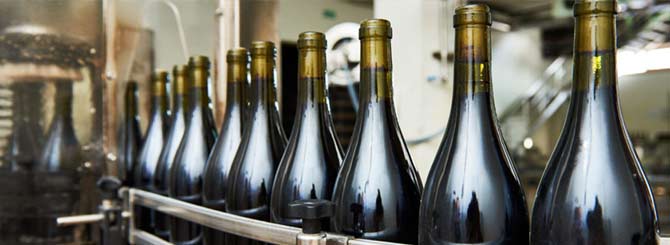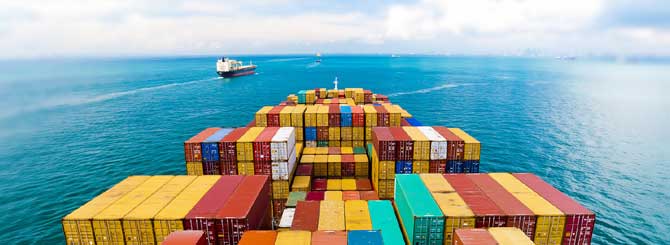With more US tariffs being threatened, producers and importers are looking a way through the trade war.
European winemakers are facing two seemingly apocalyptic challenges simultaneously.
On the one hand, there’s the issue of the harvest. Unfavorable climatic conditions severely impacted harvests in Italy, France and Spain especially, but with all countries save Portugal reporting declines year-on-year, according to the Organisation of Vine and Wine’s recent report on wine production. Worldwide, production was down 10 percent, with Europe showing declines of 15 percent; Spain reporting a decline of 24 percent.
On the other, there’s the 25 percent tariffs that went into effect in October on $7.5 billion in European goods, including specified wines from France, Germany, Spain and the UK. Together, those countries exported 31.2 million cases of wine to the US in 2018, according to Impact Databank. On December 1, Trump threatened further tariffs against French producers after France introduced a 3 percent tax on digital services that affect large America tech companies. The office of the United States Trade Representatives said that another $2.4bn worth of goods from France – including sparkling wine – could be slapped with a 100-percent tax as payback. Just two days later, though Trump, struck a conciliatory tone during a meeting with France’s President Emmanuel Macron.
“I think we’ll be able to work it out,” Trump said.
Potential losses
These circumstances seem, to those it’s affecting and those observing from afar, like some sort of malevolent deus ex machina, equally arbitrary and impossible to control, hell-bent on destruction and mass chaos. The reduced harvests have widely been blamed on climate change, or as the Organisation of Vine and Wine delicately phrased it, “unfavorable climatic conditions”. The rate of the tariffs, meanwhile, appear to have been picked at random. Why, for example, are wines getting hit with a 25 percent tariff, while airplane parts get 10 percent? And why – potentially – 100 percent on sparkling wine, cheese and handbags in response to 3 percent for tech?
Perhaps understandably, members of the industry were not soothed by Trump’s assurances. On December 3, the Fédération des Exportateurs de Vins & Spiritueux de France warned that taxing French sparkling wine exports to the US – which accounted for about $764m worth of product in 2018 – would be disastrous for the industry, and begged Macron for help.
“We therefore solemnly call on the President of the Republic to take, from today, all the necessary initiatives, at the national, bilateral and international levels, so that our sector does not pay the price of the economic and political choices made by France,” Antoine Leccia, president of the FEVS, said in a statement.
But France’s finance minister Bruno Le Maire did not appear to be in the mood for diplomatic peacemaking. He dubbed the new threat “simply unacceptable”, according to the Associated Press. “It’s not behavior we expect from the United States toward one of its main allies.”
Both European and American producers and trade organizations are alarmed by the tariffs, and are openly issuing dark prognostications about the implications the tariffs, on top of the harvest, will hold for the wine market worldwide.
In France, winegrowers are facing losses of $335m from the current tariffs, according to Le Maire. Last year, France sold about $1.1bn worth of still wines to the US. Overall, the US consumes about 20 percent of France’s total wine exports. In Germany, wine shipments to the US account for about 25 percent of their $339m export market.
If the tariff had been instated last year, 16 percent of the US’s total wine import volume would have been affected, breaking down to 13.9m cases of French wine, 4.1m cases of Spanish wine, 2m cases of German wine and 45,000 cases of English wine, according to the United States International Trade Commission. Of the 20m cases affected, 9m were classified as red wines, 6.2m as whites and the remaining 4.8m as “other”, most of which hailed from France and were likely rosé. If that tariff had been in effect, the increase in prices on less-expensive ($14 and under) wine could be as little as $2, but Steve Dorfman, a partner at global wine and grape brokerage Ciatti Company, argues that even that is too much.
“People are extremely sensitive to price, especially when wine is $20 or less,” Dorfman says. “If a wine they’re used to buying goes from $12 to $14, many will not buy. And will they turn to a California wine instead? Unclear.”
Americans are the ones who will pay now and down the line for tariffs, argues Mosel’s Nik Weis, winemaker at Nik Weis St. Urbans-Hof.
“We produce Rieslings in the Mosel for between $20 and $25 a bottle,” Weis says. “We are making wine from small, terraced parcels in a region with hundreds of years of history of making just this type of wine, for half of what most origin-focused American wines go for. We are one of the biggest family producers in the Mosel, but even so, we can’t absorb this cost.”
Instead, he says, his importer has to. “The American importer bears the initial burden of these tariffs because they have to pay the full cost of the wine,” Weis explains. “I also feel sad for the consumers, who have to shell out probably an extra $6-8 a bottle for our wine.”
He hopes that the American market – which takes about 40 percent of his 240,000-280,000 bottle annual production – will be willing to absorb the extra cost.
“We are lucky simply in that Riesling from the Mosel is a very special category,” Weis says. “The quality and price we offer is incredible, and people who seek it out understand that. I also believe these tariffs will be temporary.”
Weis, as with many other European producers, already suffered extreme losses due to hail on a 10-hectare portion of his vinegrowing area, which totals about 45 hectares all together. This year, he harvested around 16,000 liters per hectare in that parcel, down from his usual 50,000 liters per hectare.

© Amorim
| Some importers are looking to ship in bulk and bottle in the US to avoid tariffs on bottled wine.
Strategies
Many producers, like Weis, will be unable to absorb a portion of the cost, and have no plans to adjust how they produce their wines.
But some do have wiggle room.
Quintessential Wines, a Napa-based wine import, sales and marketing company, representing wineries from all over the world, including France and Spain, was one of the first American companies to grapple with the tariffs firsthand. Quintessential is the exclusive importer of Georges Duboeuf wines, maker of Beaujolais Nouveau, the inexpensive first wine of the harvest.
“I thought the first set of tariffs was a bluff,” Dennis Kreps, co-founder of Quintessential, says. “When they went through, I was shocked. The entire ordering process had been put to bed, the pricing was worked out, orders had been placed by retailers.”
So they – and the team at Georges Dubeouf – did the unthinkable.
“We absorbed one-third of the tariff, and so did they,” Kreps says. “Most wholesalers picked up the remaining third. I don’t have the final sales numbers yet, but so far, we’re getting great feedback, and aside from a few markets where the price did increase more, most of the increases have trickled down as pennies on the dollar.”
Kreps estimates that, all told, Georges Duboeuf exports 170,000 cases to the US, about 100,000 of which are Beaujolais. For now, Kreps says that Quintessential plans to replicate this approach of “sharing the burden” across their portfolio of producers affected by the tariff.
“We’ll cut back on marketing and advertising costs to balance out the cost of cutting our margin,” Kreps says. “But many producers and importers who are smaller and are only focused on the French, Spanish or German market would not be able to bear the short-term burden of cutting their margin. So I feel for them, because these tariffs could be devastating if they go on. And if the tariff went up to 100 percent? That would not be a feasible approach for us.”
Others, instead of adjusting profit margins, are in the process of transforming their bottling operations. Instead of bottling the wines at their winery, Ciatti’s Dorfman says, they can ship the wine bulk to bottlers in the US who will bottle their wines according to their instructions and stipulations, thus evading the tariff, which only covers bottled wine. One company, Florida Caribbean Distillers is courting European winemakers, and Dorfman says there are dozens of other established bottling facilities around the country.
“Bulk wine shipments have been perfected, and there is no loss in the quality of the wine when it’s bottled in the country it is being shipped to,” Dorfman explains. “Instead, there are multiple benefits, including a significantly reduced carbon footprint due to the weight of shipping glass bottles. Also, a new bottling line in Lodi is going to produce better results than a 40-year-old basement operation in France, so if anything, quality goes up.”
The one hang-up with bulk wine, Dorfman admits, is perception, but he pins that on the so-called “gatekeepers” of the industry, not the consumer.
“Consumers care more about price than they do about where a wine was bottled,” he says. “Where wine that has been bottled away from its source can be judged as somehow – incorrectly I would argue – inferior to wine bottled at the winery, is by the critics rating them and retailers, who sell them.”
American exports?
American importers and consumers aren’t the only ones who could end up paying the price for the tariffs, industry pros caution.
The Wine Institute, representing California wines in the US and worldwide, believes the tariff could imperil the US wine industry, nominally the exact opposite of its intended effect. In 2018, the EU imported $469m worth of wine, not a huge portion of the American wine industry’s overall $70.5bn value, but a substantial chunk of change.
Retaliation for tariffs certainly has precedent: when the EU imposed tariffs on US spirits in response to the US levying EU steel in 2018, American whiskey exports plummeted 21 percent.
“Wine Institute has always supported the fair, open and reciprocal trade of wine around the world. Consumers worldwide have embraced California wines because of our premium quality, diverse offerings and leadership in sustainability,” said Bobby Koch, Wine Institute president and CEO, in a statement. “However, we are concerned that this action will lead to increased tariffs on US wines and set back our efforts to continue growing US wine exports.”
Fifteen wine and spirits organizations in the US and Europe also issued a joint statement on the initial tariffs, cautioning massive job losses. “Importantly, the US and EU wines and spirits sectors are interconnected, with companies owning a range of European and American distinctive spirits and wines in their brand portfolios. As a result, these new US tariffs on EU spirits and wines could result in the loss of 8000 good-paying jobs across the US beverage alcohol sector, from importers, distributors, wholesalers, to the hospitality sector.”
Now imagine what could happen, not just to small-scale French winemakers and their one-man import shops, but also Napa and Willamette Valley producers if 100-percent tariffs go into effect? It seems unimaginable, but then again, the unimaginable just keeps happening.


